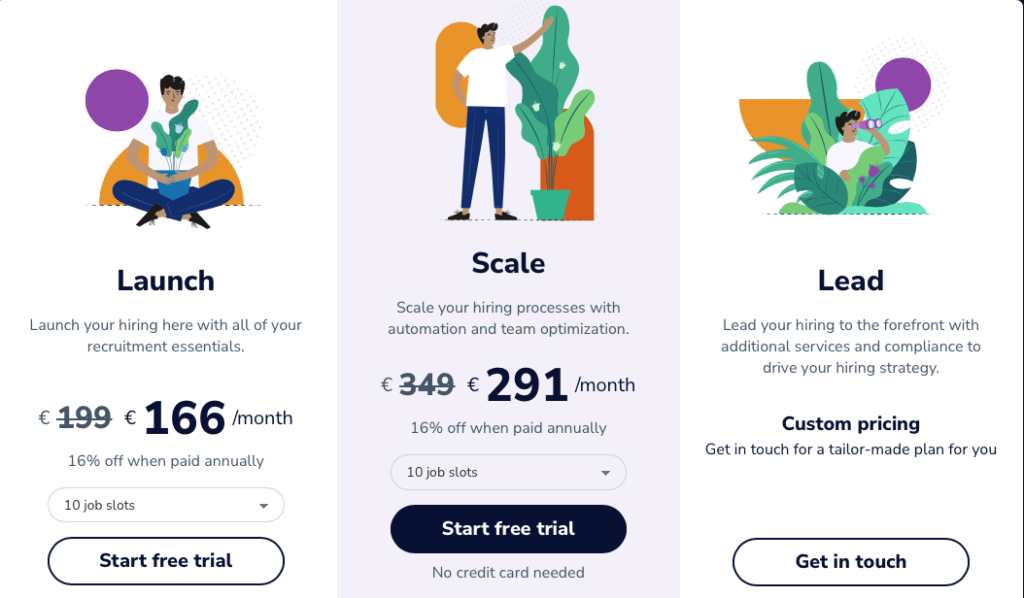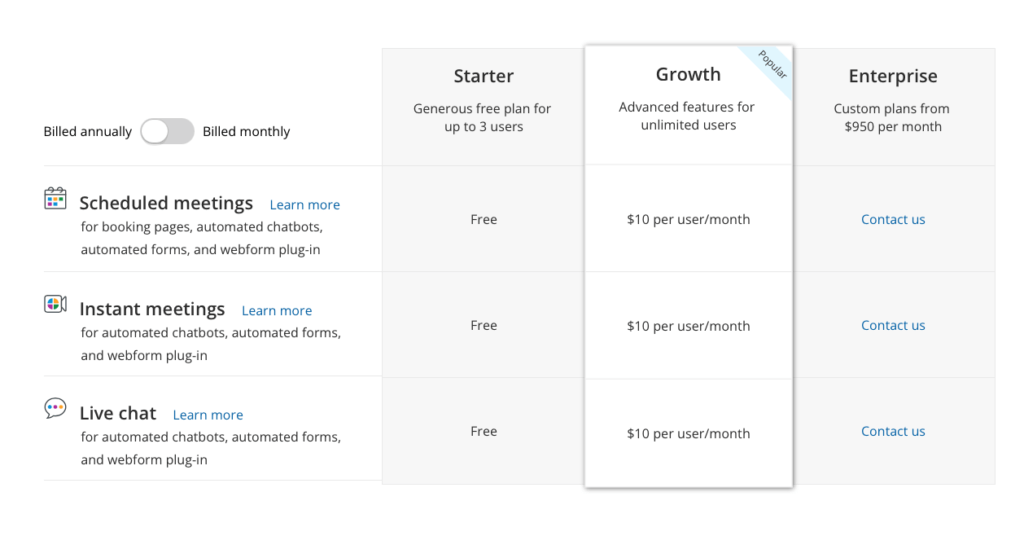The Full Guide to Remote Recruiting

Welcome! If you’re looking to learn how to do remote recruiting on your own, trying to decide whether or not you should hire a recruiter, or are just interested in the industry, this is the guide for you.
So, what is remote recruiting?
Think of remote recruiting in the same vein as classic office recruiting, with the difference that, as an employer, you are not limited to candidates from your local area, but are free to hire from all over the world.
For instance, let’s say you’re a digital agency based in Boston and you want to hire a new copywriter.
The classic approach would be to post a job and seek candidates in Boston, which you would then call for an interview in your office before hiring one of them.
And that’s fine, Boston is a big area, covering 232.1 square kilometers, and has close to 700,000 people living in it (and some of them are copywriters).
But now, let’s widen our focus a bit to the Boston Metropolitan area, which has almost 5 million people living in it. Then to the state of Massachusetts with a nearly 7 million population. Then to the whole United States with 330+ million and finally the whole world, with 8 billion people living in it.
You see how, little by little, those 700,000 people become just a few and the 232.1 sq km is now cramped when you have access to the whole world?
That’s the beauty and appeal of remote recruitment.
How Do You Recruit Virtually?
But how do you recruit remotely or “virtually”?
If you’ve been recruiting from the office so far you likely developed some sort of a process that helps you almost instantly vet candidates.
Perhaps, for instance, you find it best with a new employee to size them up with a long, hard stare.
But now you’ve heard all these amazing things about remote hiring and you want in on the action.
So how do you recruit remotely? The remote recruitment process includes the following 7 steps:
- Posting a job
- Promoting a job
- Sourcing candidates
- Interviewing candidates
- Assessing candidates
- Checking candidate references
- Delivering offer
Obviously, your hiring strategy and the process should be unique to your business model and can’t be copied from others. As this can be a little challenging, we will give you 7 tips that will make the whole process much easier.
Here’s how to do your own remote recruiting:
1. Start with the Right Job Description
One of the unexpected consequences of the Internet is that we are overwhelmed with content. So how do we fight this content saturation?
By skipping parts of the content that our brain deems unimportant.
A lot of your job candidates will do the same when it comes to your job description, especially if you didn’t tailor it best.
For instance, take almost every job project on Upwork and you’ll see that most of them look the same – “I’m looking for a copywriter, inquire within”.
This does two things and neither one will help you in particular:
- It attracts “bulk candidates”, meaning those that apply for jobs “in bulk” without thinking if the job is the right fit for them or the job.
- The actually “good” candidates will skip your job post so you’ll lose the opportunity to hire someone properly qualified
To avoid this, you need to answer a couple of questions yourself:
Who are you hiring for?
Meaning, what is your company about? As Simon Sinek said, you need to start with “why” and not “what” or “who”.
What are you looking for?
What is this role about? Saying that you are looking for a “guru” or “rockstar” or “ninja” may sound cool but other than attracting candidates with inflated egos (“yeah, I’m totally a ninja”), it doesn’t help you find the right candidate.
What are the requirements and skills for this job?
For instance, are you looking for people with more experience or are you open to giving a chance to someone with less experience? Are you looking for a specific skill, like research or a keen eye for details?
What time zone are you looking at?
The time zone will be a bigger factor for some jobs than it will be for others. It all depends on how often you need to communicate directly with the future employee.
For instance, if your industry is particularly fast-paced, hiring a candidate that is in a time zone that is 4-5 hours away won’t help.
What do you expect from the role?
What is it that the candidate should accomplish in this role for you to consider that they have done a good job at it?
For example, for a copywriter, this could be how many people buy your product or sign up for the service based on their copy.
What does “remote” mean for you?
Even though the term “remote” seems quite obvious you’d be surprised at how many employers manage to screw up the definition.
So then you have a “remote” job limited to people in one area. Or, some employers will only allow you to work remotely or from your home a few days a week, and the rest you have to come to the office (this is the “hybrid working” and not “remote working”).
Job Description Template
Job descriptions shouldn’t be all that complicated. Most job posts follow more or less the same template, which we’ll take you through.
Summary
A 4-6 sentence summary of the job description (basically, a TLDR). Includes what your company does, job title, requirements, whether it is full or part-time, salary, location…
About Us
Here, you introduce your company, what you do, your clients, the reason(s) you are hiring, company size, etc. In addition to all of these, you should also always include a link to the company site.
About the Role
A more comprehensive job description. Why was it created? Who will the candidate report to? Are there any tools they will need to learn for this role? How will they communicate with others? What will their responsibilities be? Does the company offer any training or onboarding? Is the role long or short-term? Full or part-time?
Who Are We Looking For?
Describe your ideal candidate. What skills and attributes are you looking for in candidates? Personality? Passions? Experience level? What skills will be must-have and what nice-to-have? Any industry experience needed?
What is in it for the Candidate?
What kind of salary can the candidate expect if hired? Growth potential both for themselves and the company as a whole? Any benefits and perks that come with the job (office and tech stipend, new smartphone, better healthcare, gym membership, company retreats)
Once you know the job title, you can search for similar job descriptions on job boards or a search engine to get an idea of how similar job descriptions are structured. This is also good to review because the types of candidates you’re looking to attract will also be reviewing these job descriptions. You’ll want to see how your job compares to the current offers.
2. Review and Score the Candidates
What type of candidate are you looking for? Someone with loads of experience on similar projects? A team-player? Maybe someone with a diverse set of skills (jack of all trades)? Are there any particular skills and qualifications that you are looking for?
Define each of these before you start reviewing applications so you know who you’re looking for.
The best thing to do here is to create a grading system.
How to Use a Grading System
The question now is, how do you grade candidates?
In their book Who: The “A” Method for Hiring, Geoff Smart and Randy Street argue (and rightly so) that you should strive to only hire “A” players.
They defined the “A” player as:
“A candidate who has at least a 90% chance of achieving a set of outcomes that only the top 10% of possible candidates could achieve.”
With that in mind and to help “A” players realize their potential and companies/hiring managers find such candidates, Smart and Street developed the “A Method for Hiring”, which has four steps:
- Scorecard
- Source
- Select
- Sell
Let’s go through each step.
The Scorecard is useful for standardizing the hiring process and can contain 3 to 5 elements:
- Competency: For instance, “Team Player” or “Negotiation Skills”. This can also be color-coded (red, yellow, green) by how easy or difficult it is to change a certain competency.
- Definition: Definition of said competency. For instance, “Education” can be defined as “having both formal and informal education and willingness to keep learning”.
- Minimum Acceptable Rating (MAR): Each competency should have its own 1-5 MAR which depends on the job position in question. For instance, a CEO needs to have the highest MAR in “Strategic Skills” or “Goal Setting” competencies, but it can have a slightly lower MAR in “Likability” or “Experience” competencies.
- Candidate Score: This is how well the candidate has scored for each of these competencies (1-5). Again, their score should at least be equal, if not greater, than the MAR.
- Comments: Any comments you’d like to add regarding the candidate’s score?
Here’s an example of a job scorecard for a General Manager.
Now that you have the scorecard ready, it is time to Source candidates.
Your search for candidates does not start when a need for a new hire arises, nor does it end when you hire someone.
Instead, you need to search for talented people all the time.
Next comes Selection.
This is the interview part and according to the authors of the book, Selection has 5 steps:
- Screening Interview: This is the first, introductory interview in which you ask candidates about their goals, strengths, and weaknesses related to the job, etc. The purpose of this interview is to weed out “B” and “C” (and those below) players from the “A” players.
- Who Interview: Now that you (hopefully) only deal with “A” players, the Who Interview will tell you a bit more about the trajectory of their career so far. In this part of the interview you’ll ask the candidate about the previous job, why did they leave, what results did they achieve, who did they work with, etc.
- Focused Interview: This part of the interview should give you answers to more specific questions about the candidate that their CV or even the Who Interview can’t give you. For instance, you could ask the candidate what they are most proud of from the previous job or what they learned during it.
- Skill-Will Bulls’ Eye: The final step of the Selection helps you align the candidate’s “skill” (what they can do) and their “will (what they want to do) with your Scorecard. If you find the candidate whose “skill-will” profile matches the Scorecard “to a tee”, you probably found the right person for the job.
The fourth and final step of “A Method for Hiring” is Sell.
The one “selling” is not the candidate (they already did that through steps 1 through 3), but you. This step tackles the question “why should the candidate accept the job?”.
Smart and Street outline 5 things that candidates care about in the book. Namely:
- Fit: Does your company’s vision/mission/culture align with the candidates values/goals/strengths?
- Family: Often the job is in a different city, country, or even continent and the candidate must uproot their entire family. How can your company make this easier for them and their family?
- Freedom: Many people are not motivated by the paycheck but rather by the level of autonomy and freedom they are given. How much of it can you give them? This can be especially important with freelance and remote jobs.
- Fortune: This isn’t just about the immediate salary you’re going to give them, but its upside and the upside of the company with it. Try to be honest with yourself and the candidate here and don’t overpromise.
- Fun: Hiring managers often emphasize the relaxed work environment or the strong bonds among employees, saying stuff such as “we are like a family here”. Remember, those things are important to people but don’t sell your company as “relaxed and low-stress” when it’s clearly not.
When you’ve found 3-5 candidates you like, reach out to schedule interviews. Don’t hesitate to connect with them. The best candidates are picked up fast.
3. Know How to Conduct an Interview Efficiently
One of the advantages of traditional, in-office hiring is that you get to get to see the candidate in flesh and blood. This can be especially useful if you want to determine how “fast” the candidate is thinking, whether are not they are comfortable with people, do they get easily flustered, and so on.
With remote recruitment, things like that are a little harder to spot, especially when you don’t have the camera on the candidate.
This is the minimum that you should look for when conducting a job interview – being able to see the interviewee. Fortunately, there are several video call applications, like Zoom, Google Meet, Skype Business, etc. Pick any one of them as they will make your interviews much better.
The problem with most interviews is that far too often, the interviewer focuses too much on talking about the company and what they are looking for.
This way, the interview devolves into a sales pitch for the company and the interviewee is left dumbfounded as to what exactly they would be doing there.
An interview is there to give both the interviewer (representing the company) and the interviewee an idea of how the two will match. This is often more important than the more tangible requirements like location, citizenship, language, experience, or skills, that we outlined in the template above.
An interview is your chance to get to know the candidate – so take advantage of this time!
Here are some standard interview questions, though you can certainly add some of your own depending on the job:
- Why did you apply for this role?
- Why are you leaving your current position?
- Tell me about your current role and responsibilities
- With your last project, tell me about something you did that you’re proud of
- What do you see as the most challenging part of this job?
- What are your strengths?
- What are your weaknesses?
- Have you worked remotely before? Tell me about your experience. If not, would you be comfortable working remotely?
- What kind of work environment do you thrive in?
Try not to schedule one interview immediately after the other, but give yourself a 15-30 minute break.
That way, you can continue the call longer if you and the candidate choose to. Also, you’ll have time after the interview to write down your initial thoughts about the candidate and the interview.
4. Test the Candidates
Look, you will get candidates claiming to know how to do all sorts of things and being experts in this and that.
Now, you shouldn’t blindly trust them on their word, but instead, put them to the test.
For instance, the vast majority of job posts all follow the same line of questioning:
- Why are you interested in this particular job?
- Why do you think you’re the right candidate?
- Do you have any suggestions to make this project run successfully?
- Have you taken any tests?
- How much time do you think it will take you to accomplish the task?
The problem is that many candidates want to apply to as many jobs in as little time as possible so they will give generic or pre-learned answers.
You don’t want those. You want to make them think and the best way to do that is to hit them with an unexpected question (that, of course, is related to the job).
For many roles, you’ll be able to get a strong idea during the hiring process of whether or not a candidate is qualified. If you have strong knowledge of the skills required for the role, you’ll be able to see if the candidate does as well through conversations.
However, there might be job openings where you’ll want to see relevant examples of candidates’ work to assess their skills. This is a good time to give an assessment, either by you or a professional service.
For instance, if you’re hiring a copywriter, you can give them a topic and ask them to write a 500-word copy on it in 2 hours so that you can see how they actually write (and not how they say they write).
Remember – if you’re asking them to do work for you, PAY them.
Some tests you can do on your own, almost ad-hoc, but you should be careful of being biased one way or another.
Because of this and also that it can be time-consuming to create a test for a specific job, here are some pre-employment testing sites you can use to screen candidates:
TestGorilla is a pre-employment testing software that includes a very detailed Test Library that you can filter by job role and test type.
Pricing:
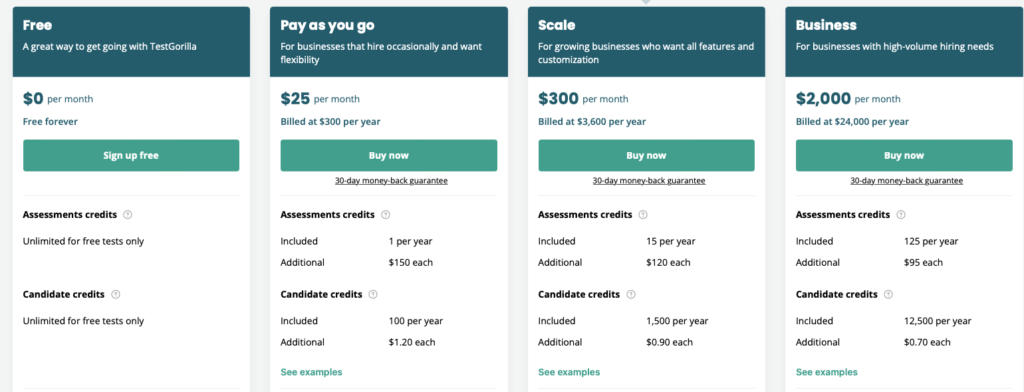
iMocha is an AI-powered employee skill assessment testing software that has already helped 200,000+ candidates find their roles and 500+ SMEs.
Pricing:
To get a price for your company you’ll need to get a quote from iMocha’s pricing experts.
eSkill includes highly customizable skill tests, video questions, cognitive and behavioral tests, and assessments.
Pricing:
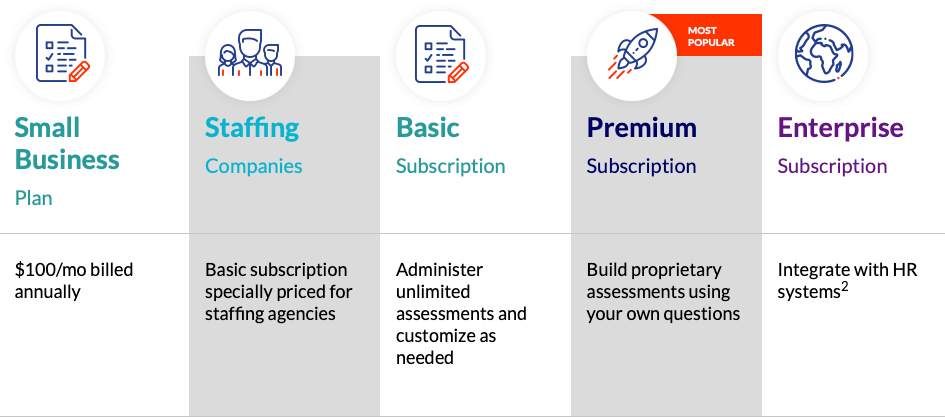
HR Avatar lets you measure the competency and skill level of your future employees, have live or recorded video interviews with them, and check candidate references easily.
Pricing:
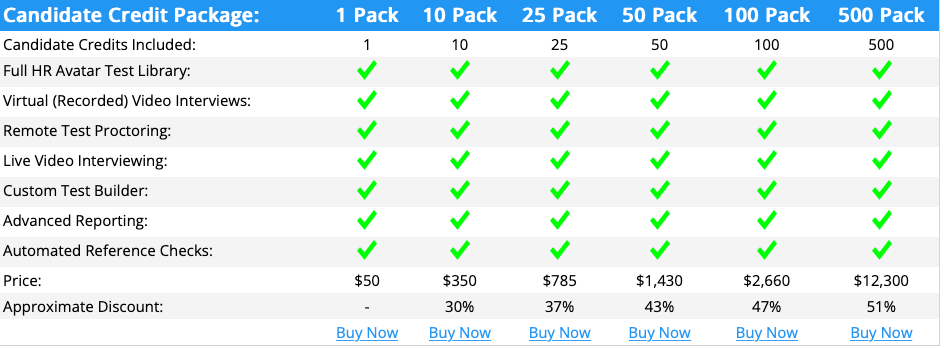
Criteria Corp helps companies improve employee retention rates and build a more engaged workforce through science-backed tests, of which it has already administered more than 30 million in 15+ years.
Pricing:
Employers can use a 21-day free trial of Criteria for up to 20 tests or get a custom price quote from the sales team.
5. Decide
Here’s the hardest part.
Deciding on the best candidate (or the “best fit” candidate, rather) from a group of more-or-less equal candidates.
But there is no such thing as a “perfect” candidate. One candidate will be better at one thing than the next, who will be better at another, and so on.
So how do you decide which to hire?
One thing that can help you is to already know which hard and soft skills you want in a candidate and to grade those skills by importance.
For instance, for a copywriter, perfect knowledge of the English language and grammar is a must, while SEO know-how is definitely useful but not as important, and finally knowing graphic design is even less important than that.
So then, based on that, you can grade candidates and compare them to each other or your existing team members. If you find a candidate that is blowing everyone out of the water, that’s who you should hire!
6. Onboard
Another big potential problem for employers who hire for remote positions or freelancers is how to best onboard candidates that won’t be coming to the office and therefore won’t get to fully know the company culture.
Unfortunately, many online recruitment agencies consider their job done when they find you the candidate and you hire them, but do nothing to walk them through the tools they’ll be using, or the team they’ll be working with.
You need to show them the ropes, so it’s best if you have someone more experienced who will supervise them at least until they learn what’s what in your company.
So who should onboard new employees in the company?
On an individual level, the hiring manager should be the most involved person in helping the new hire jump into the role and take on new responsibilities.
However, the hiring manager can’t do onboarding ad hoc, as this needs to be a coordinated process, involving multiple people and departments, but most importantly HR.
Finally, there should always be someone in the company that the new hire can turn to with questions about company culture and all those unwritten rules in the company like “how long can I stay on my lunch break?”.
Here are a few things that the hiring manager needs to have before onboarding a new hire:
Schedule training time
It’s best to schedule training time when things are mostly calm so the training doesn’t interfere with the regular business process and the new hire doesn’t get overwhelmed.
This is like learning to drive a bit. Here, the candidate first goes to a driving course with no traffic, and moves to smaller streets with minimal traffic, before finally going into regular traffic.
When will they start their first projects and what will their responsibilities be?
So, after the candidate is hired, should you immediately throw them into a project and wish them good luck?
Of course not. Even if a new hire joins your company after already working in the same position, there are always nuances in how each company handles its projects, what each member’s responsibilities are, and so on.
With that in mind, it’s best to gradually introduce the employee to the process by pairing them with someone from your company who can show them the ropes or give them perhaps somewhat reduced responsibilities until they show themselves ready for more.
Introducing them to other team members
Of course, the new hire should also get to know their future team members so they can become a part of the group.
For example, you can send an email to your employees, introducing their new colleague like this:
[To: All Employees]
Hi everyone,
I would like to introduce (Employee Full Name) to our team. [Employee First Name] will be joining us as [Job Title] as of [Start Date].
[Employee First Name] previously worked at [Previous Company], where he worked for [Time Spent] and I believe [Employee First Name] will be a valuable asset to our team.
Kind Regards,
[Your Full Name]
[Your Title and Department]
[Signature]
If applicable, you can also add a photo of the new employee.
Who should go over the company policies with the new hire?
Company policies can be dull, but they are nevertheless important to go through during the onboarding process.
They tell employees what they can and can’t do, and how to behave appropriately and also helps them understand their rights and obligations better.
There’s usually a lot going on here, so there should be someone to go over the company policies with them. Usually, this is someone from HR or the hiring manager themselves.
Paperwork the new hire needs to sign
Finally, we come to the paperwork that the new hire needs to sign before starting.
This includes:
- Contract
- W-4 or W-9 form
- State Tax Withholding form
- E-verify system (to verify that the employee is eligible to work in the U.S.
- I-9 Employment Eligibility Verification form
- Direct Deposit form
- Confidentiality/security agreements
- Non-disclosure agreements
- Non-compete agreements
- Drug/alcohol test consent agreements
- Job analysis forms
- Paperwork describing terms and conditions for employee benefits
- Employee personal data for emergencies (emergency contact, medical history, etc.)
Hiring Time
For a candidate who has just finished an interview, the words: “Congratulations, when can you start?” are like honey to their ears.
But in reality, the hiring process doesn’t work like that and it takes 36 days on average from approving the job post to the final candidate accepting the position according to the Society for Human Resource Management’s Customized Talent Acquisition Benchmarking Report.

The bottom line is that the interview process can take a long time if you want to do it right. Unfortunately, your company might not have that much time and needs someone right now.
Besides, it costs $4,425 on average to just hire someone according to SHRM and another $986 to train a new employee according to the 2018 Training Industry Report by Training Mag.
What is Headhunting vs Traditional Recruitment?
Of course, hiring time depends on a multitude of factors, like what is the job, the industry, in what city, etc. One particular factor is how much responsibility a job requires from the candidate.
For instance, according to research by Glassdoor, the shortest average length of the interview process is 8 days for a waiter, while it’s 60.3 days for a professor.
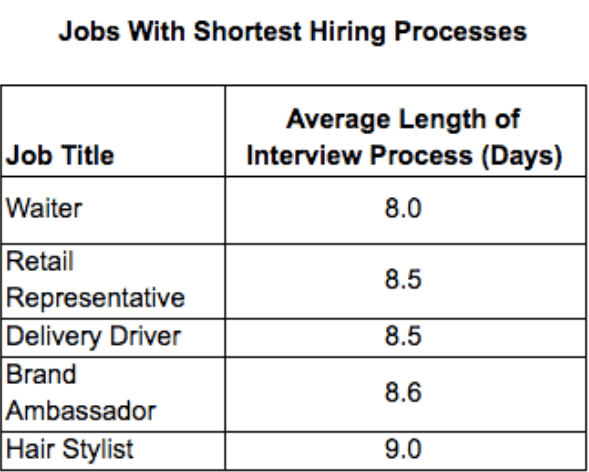
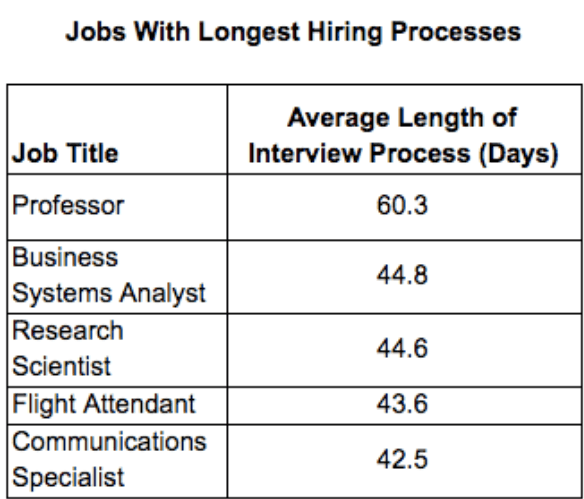
So what do companies do when they need to fill the position in the shortest time possible, where traditional recruitment methods take too long?
They start Headhunting.
What is Headhunting?
Headhunting is a specialized form of recruiting that involves cold outreach to high-level professionals, often ones who are currently in a role with another company.
Also known as Executive Search, Headhunting primarily targets candidates for executive and senior-level jobs. In other words, you won’t go “headhunting” for a web developer or copywriter, but you would for a creative director or chief of marketing.
What is Contract Staffing?
When hiring new employees, whether in-house or remote, a big question that you will have to determine is their employment arrangement or type.
There are 5 types of employment arrangements:
- Full-time
- Part-time
- Commission
- Apprenticeship
- Remote
- Contract
Each of these deserves its own dedicated article, but right now we’ll focus on the last one – contract staffing.
What is Contract Staffing?
Many companies undertake fixed-time projects (short or long-term), but outside of that don’t need to keep more than basic staff. What these companies can do to fill their staff capacity when a new project arises is to use contract staffing.
Contract staffing is an employment arrangement in which the staff is hired on a contract only for the specific project and the function they would have in that project, for a specified time and rate.
Tools That Remote Recruiters Use
Even though most recruiters today simply use LinkedIn to find new people and often without even doing any research on the candidate (one recruiter offered me a position as a Link Building Specialist, while I’m a Content Writer for instance), the best remote recruiters use a variety of tools to help them find and vet candidates.

1. Applicant Tracking System (ATS)
ATS is a must-have tool for remote recruiters as it allows them to greatly simplify the hiring process. For this reason, 75% of recruiters and talent managers use ATS, according to Captera.

Advanced job sourcing
Saving candidate profiles and databases
Resume screening
Interview scheduling
Customized interview questions
Hiring metrics
Team collaboration
Here are some of the most popular ATS systems that remote companies and remote recruiters use:
Greenhouse
Greenhouse is a recruiting and onboarding solution for small to midsize businesses and enterprises that can help recruiters with sourcing the best talent and transition candidates into employees without a 3rd-party solution.
Pricing:
Request a demo

Recruitee is a collaborative hiring ATS solution that you can test for free for up to 18 days before purchasing it or try a 30-minute demo.
Pricing:
Breezy is an affordable and easy-to-use recruiting solution for small and medium businesses that can greatly simplify your candidate sourcing, hiring and onboarding and it also includes a 14-day free trial.
Pricing:

Workable is the world’s leading recruiting software that can greatly reduce your time-to-hire and make sourcing, assessment and engagement much better.
Pricing

2. Candidate Relationship Management Software (CRM)
A huge problem for candidates is the lack of information and feedback about the job. Many job posts are either too generic or confusing as to what the recruiter is looking for.
CRM software helps recruiters be more clear about their job and engage with candidates and make their experience better.
Examples:
TalentLyft is a CRM software aimed primarily at SMBs that makes finding and engaging candidates for your business easier.
Pricing:
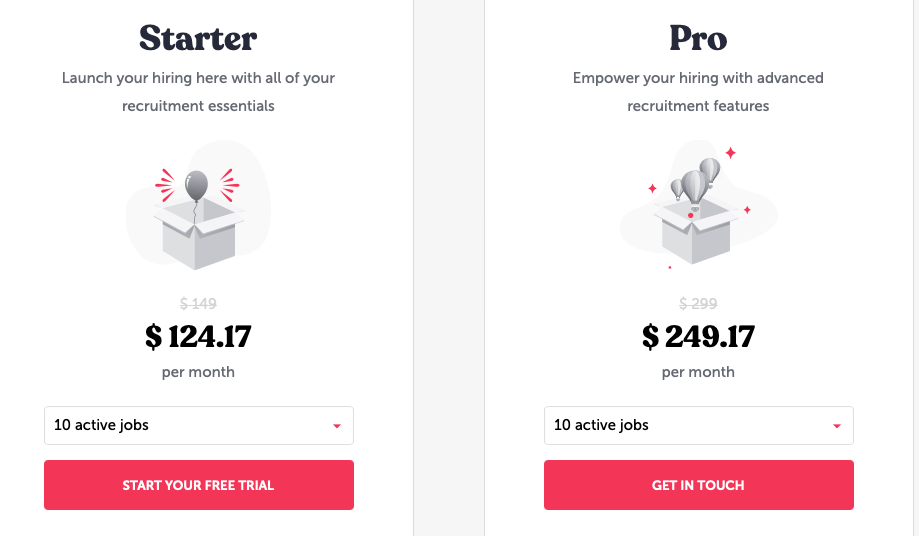
Avature helps recruiters find and approach talented candidates that are fresh from college by building campus events where they can engage with them.
Pricing:
Contact Sales for a Quote
Yello
If you need a CRM solution that can handle recruiting at scale, this is where Yello can help you out. The software allows recruiters to automatically search job boards for candidates and then import them into the CRM before engaging with them.
Pricing:
Request a Demo
Symphony Talent
Symphony Talent (formerly SmashFly) is an AI-powered SRM solution that enables recruiters to automatically source candidates from your database based on your requirements and segment them.
Pricing:
Request a Demo to get a custom price
3. Video-Conferencing Tools
We already mentioned video-conferencing tools such as Zoom, Google Meet and Skype Business and how they are a crucial part of the remote interview process because they allow the recruiter or talent manager to see the candidate.
The Covid-19 pandemic was especially “good” for video-conferencing platforms. In particular, Zoom has increased its daily user numbers from 10 million in 2019 to 300+ million in 2021.
Examples:
Zoom is a video conferencing app that has seen exceptional growth since the start of the pandemic, growing from 10 million users in 2019 to 300+ million in 2021. It features high-quality audio and video for up to 100 users (with the free version).
Pricing:

Zoho is an online meeting platform that makes remote collaboration much easier. With Zoho, you can start (if you’re a recruiter) or join (if you’re a candidate) meetings for free from anywhere with real-time video, audio and screen-sharing.
Pricing:
HireVue is an enterprise-focused talent experience platform that allows companies to source, screen, engage and finally hire talented candidates using video interviews and text recruiting.
Pricing:
Request a demo to see the product in action.
Harver
Harver is aimed primarily towards those companies that hire in larger volumes and therefore need a tool that can help them hire at scale.
Pricing:
Get a demo
4. Skill Assessment Tools
As we already mentioned, assessing the candidates’ skills properly is a common dilemma for recruiters.
Fortunately, they can employ the help of AI-powered skill assessment software like Vervoe, which include features like:
- Hard and soft skill testing
- Personalized messaging
- Sharable scorecards
- Branded assessments
- Automated grading and ranking
- Customized assessment builder
We already mention a few candidate testing tools above, such as TestGorila, iMocha, and others above, so check out the Test the Candidates section of this article for each tool and its pricing.
5. Meeting Scheduling Tools
Recruiters often have to interview several candidates per day so sending emails back and forth is not the best way to book a meeting.
Instead, tools like Calendly can be used to send a scheduling link to the candidate based on their availability and the availability of the recruiter and anyone else from the company that needs to be present (like the director or department manager).
These tools also include calendar integration, minimum scheduling notice, time zone detection, and automated email notification and reminders.
Examples:
Calendly is a user-friendly meeting scheduling app that eliminates the hassle of back-and-forth email communication and phone calls. With it, you can create a custom URL, book appointments, integrate with Google Calendar, and send automatic reminders among other things.
Pricing:
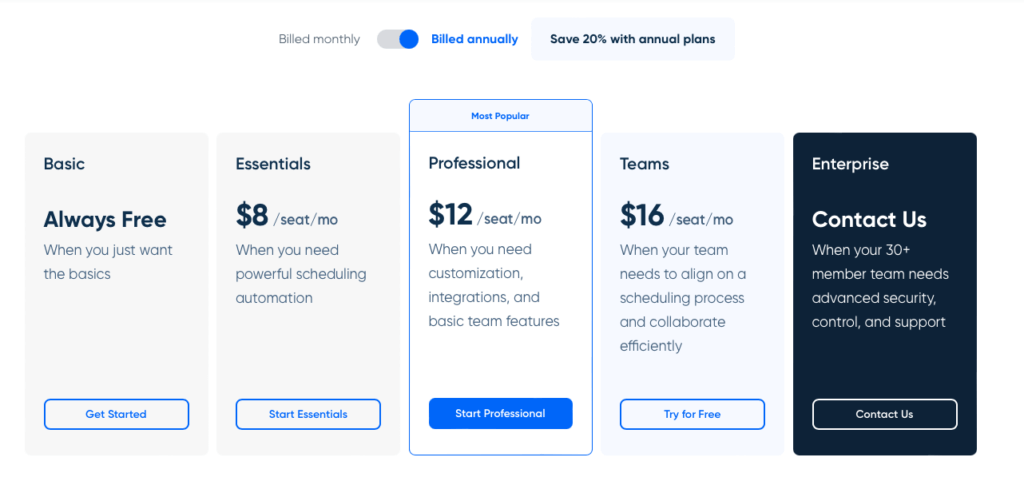
NeedToMeet allows you to block time in your calendar for meetings and let candidates/attendees know when you’re available. When one block gets the most votes, you can book a meeting.
Pricing:
Pricing plans are as follows:
Standard – Free
Advanced – $12/year per user
Premium – $19/year per user
OnceHub
OnceHub (formerly ScheduleOnce) is an excellent meeting scheduling tool for those working and employing remotely. It includes timezone recognition and a number of useful teamwork features, including video calls, live chat, chatbot, phone calls, etc.
Pricing:
6. Remote Onboarding Tools
Finally, as we mentioned before, the recruitment process is not finished when the candidate accepts the offer and is hired for the job.
They still need to get familiar with the company, the new team and the position.
This is where onboarding comes into play and remote onboarding tools can help candidates get up to speed much faster, including online training, team meetings and setting up email accounts and payrolls.
Examples:
ProProfs is an employee training software that can be useful to companies in different industries, but it especially shines when used by educational institutions thanks to a library of thousands of courses as well as letting instructors create their own, custom courses from zero.
Pricing:
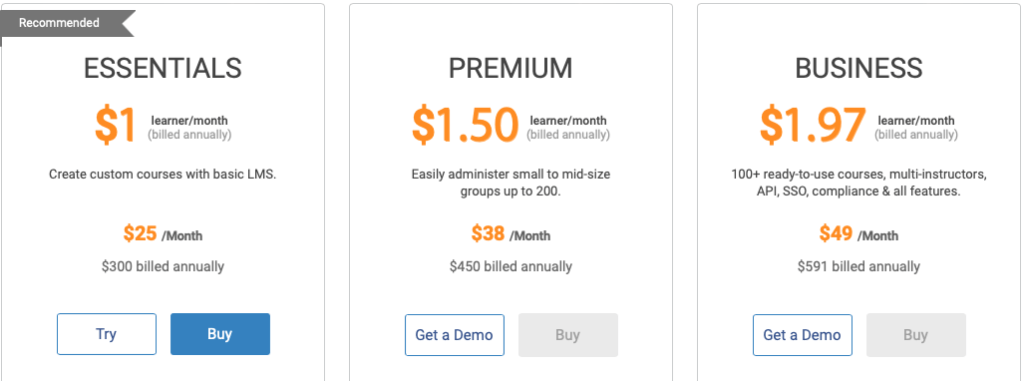
Adobe Learning Manager (formerly Captivate Prime LMS) is, like most of its other products, a top-quality solution and software for creating courses and delivering formal and informal training. In addition to this, developing individual learning paths is made easier with AI and gamification elements.
Pricing:
Request a demo or get pricing by contacting the sales team.
UKG
Started as a merge between Ultimate Software and Kronos, UKG is an HCM solution that helps companies always stay one step ahead of employee training, onboarding, payrolls, and recruitment.
Pricing:
Get in touch with sales for a price quote or request a demo.
Paylocity
Paylocity is a scalable, cloud-based LMS that works for small, medium, and big businesses and helps them monitor employee progress, create courses from scratch, track attendance, and more.
Pricing:
Request a demo
Is it Worth Hiring a Remote Recruiter or Should I Do it Myself?
Both outsourcing to a remote recruiter or doing it yourself are viable options when looking to hire new employees.
The question is how much time and resources you can devote to the recruitment process.
Many larger organizations are already equipped with enough resources that they can handle recruitment on their own, but when it comes to smaller organizations, this more often than not is not the case.
For instance, if you’re a founder of a new startup you’re probably handling all sorts of jobs, aka wearing many hats within your company. You’re managing your employees, talking to investors and shareholders, planning a business and marketing strategy and on top of that, you also have to find new people.
This can be a handful so why not delegate or outsource certain activities (like recruitment) and focus on your core business?
Speak directly with our recruitment team to learn about the options.
Related Posts:


Featured Remote Jobs
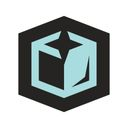 New Job! Featured Job Remote Job
New Job! Featured Job Remote Job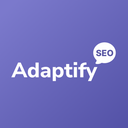 New Job! Featured Job Remote Job
New Job! Featured Job Remote Job Opened 3 days ago Featured Job Remote Job
Opened 3 days ago Featured Job Remote Job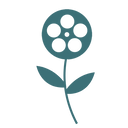 Opened 13 days ago Featured Job Remote Job
Opened 13 days ago Featured Job Remote Job Opened 6 days ago Featured Job Remote Job
Opened 6 days ago Featured Job Remote Job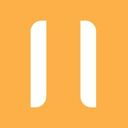 Opened 7 days ago Featured Job Remote Job
Opened 7 days ago Featured Job Remote Job Opened 8 days ago Featured Job Remote Job
Opened 8 days ago Featured Job Remote Job Opened 8 days ago Featured Job Remote Job
Opened 8 days ago Featured Job Remote Job Opened 8 days ago Featured Job Remote Job
Opened 8 days ago Featured Job Remote Job Closes in 9 days Featured Job Remote Job
Closes in 9 days Featured Job Remote Job
